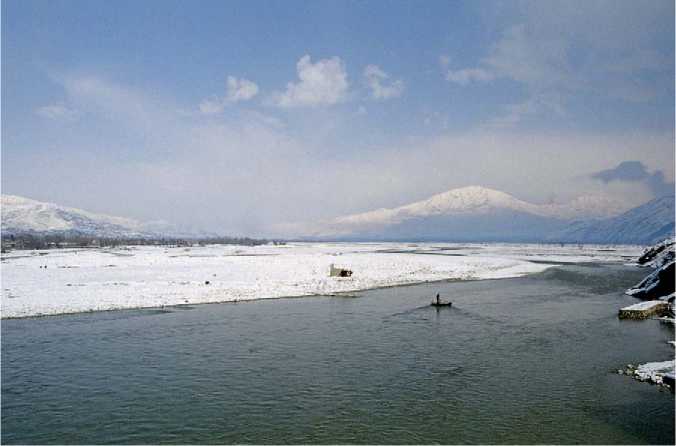Originally considered to be a distinct and abrupt phenomenon, the intensive urbanization of the Indus Valley, often referred to as the Indus or Harappan Civilization, is now considered to be the culmination of a number of indigenous regional traditions and cultural developments (see Asia, South: Indus Civilization). This developmental period, referred to as ‘the

Figure 8 General view of the Swat Valley during the winter months.
Regionalization Era’ by Shaffer, stretched as far north as the valleys of our study region.
One of these regional traditions, the Hakra, is dated to between 3300 and 2700 BCE and is located primarily in the Ghaggar-Hakra river basin. However, the discovery of Hakra-ware ceramics in the cave of Ghaligai in Swat suggests that there was a high degree of inter-regional trade and exchange present at this period. Furthermore, the presence of later Kot Dijian ceramics at Burzahom and sites within the northern valleys suggests an integral role in the growing social and economic complexity witnessed in the floodplains of the Indus to the south.
Although demonstrating continuity with the region’s early food-producing settlements, a number of significant cultural changes occur such as the cessation of use of storage pits. These features are abandoned in Kashmir from 2250 BC and replaced with rectangular mudbrick structures, a sequence also encountered in the Swat Valley. The presence of Kot Dijian ceramics within Kashmir and the Northwest Frontier is also accompanied by the presence of metal objects and beads of agate and carnelian, suggesting access to long-distance trade and sufficient agricultural surplus to allow the accumulation of luxury goods.
Rehman Dheri
While most sites, such as Burzahom in Kashmir, Sarai Khola in the Taxila Valley, and Sheri Khan Tarakai and Lewan in the Bannu Basin may have participated in the exchange of goods and ideas, it is only in the very south of the study region that urbanization occurs and complexity is fully demonstrated. Located on the western bank of the Indus River close to Dera Ismail
Khan, Rehman Dheri was established c. 3300 BC. Enclosed by a massive mudbrick wall, the town measures 550 x 400 m and is subdivided by cardinal streets to form a rigid grid-plan layout, making it one of the earliest planned settlements in South Asia (Figure 9).
Despite its role in the development of the regional cultures, which converged to form the urbanized Integration Era (c. 2500-1900 BC), the Northwest Frontier and Kashmir remained detached from this later development. For example, unlike the sites of Kalibangan and Harappa to the east, Rehman Dheri does not appear to have been incorporated into the wider networks of the Harappa Phase - only a very small terracotta bangle-making site (Hisan Dheri) was established next to the old abandoned town. The northern valley sites also appear to have remained ‘unintegrated’, but this is not to suggest that there was no cultural and economic interaction between the two communities.




 World History
World History









